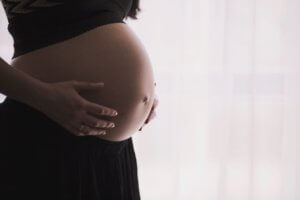Twenty years ago, this routine procedure was still considered a taboo subject: today, a curettage is something that you can inform yourself about as a woman. The reasons for curettage of the uterus can be varied, the operation itself is uncomplicated.
Here you can find out what the reasons for such an operation may be. It explains how the procedure works and how you can best prepare for it. Abrasion does not mean that doctors remove the uterus.
Maybe you don’t know exactly how to talk about abortion? Here you will find background information that will make it easier for you to deal with the topic.
Table of contents
Small Lexicon: Curettage, Abrasion, Cervix: What Is What?
For a better understanding of your doctor’s letters or practice information, the most important terms are briefly explained here:
Abrasion
The colloquial term simply describes what happens: a scraping out of the uterus. You can compare this with scraping out a yogurt pot: After all, the cup remains intact afterward.
Abrasio Uteri
The Latin term comes from the word abrade, to scrape out. Uteri is the name of the uterus.
Curettage
This somewhat outdated term comes from the French version of curettage, to scrape out, to scratch out.
Cervix Uteri
This refers to the cervix of the uterus.
Abortion
A medically performed termination of pregnancy is a curettage.
Abortion
This term refers to a miscarriage.
Endometritis
Inflammation of the lining of the uterus.
Myomas
Benign tumors in the uterus.
Curette
The spoon-like instrument with sharp edges is used for scraping.
Possible Causes Of Curettage
Even if it is a harmless routine procedure – no doctor will recommend a curettage just like that. It is often an important procedure to prevent something worse from happening or to enable a clear diagnosis.
Miscarriage Or Embryo Death
If a miscarriage occurs or if the embryo is found to have died in early pregnancy, scraping is often necessary. In both cases, tissue remnants remain in the uterus, which in the worst case can become inflamed and lead to blood poisoning
These remnants can cause complications in which it becomes necessary to remove the uterus. Sometimes, however, curettage can be avoided by administering medication.
Cervical Scraping After Birth
After you have a baby, parts of the placenta or amniotic membrane often remain in the uterus. In most cases, the uterus contracts and expels these tissue remnants.
Contraction can also be helped by medication. In some cases, however, it is necessary to perform an abrasion to stop the bleeding. In very severe cases, doctors may then need to remove the uterus.
Irregular Periods
If your periods are very irregular or your menopause is causing major complications, you may have endometritis. If you have this inflammation of the uterus, a curettage may prevent you from having to remove the uterus.
Myoma Or Cyst In The Uterus
If you have a small cyst in your uterus, it is usually perfectly safe. Your gynecologist will note it, measure it, and watch it. If it does not disappear by itself or increases in size, a curettage will be necessary.
Myomas can also be removed during a curettage. These are benign tumors made of the muscle cells of the uterine tissue.
Termination Of Pregnancy
If you wish to terminate a pregnancy without medical indication, you can have a curettage performed in Germany up to the twelfth week of pregnancy.
What Is The Procedure For A Curettage?
A curettage is performed under general anesthesia – either in a clinic or a hospital. The procedure is performed on an outpatient basis, so you can go home the same day.
Preparation
The Day Before
Read the information you received about anesthesia. It will tell you how long you need to fast before the procedure. In most cases, you will be allowed to eat something in the evening.
If you are taking medication, you must tell your doctor in advance. Sometimes it is necessary to take medicine the night before the curettage to prepare your uterus for the operation.
In The Morning Before The Surgery
If you are a smoker – please do not smoke today. Do not take anything that may affect the anesthesia, including coffee or sedatives.
If you have been given a preparation medication, you may bleed a little from the vagina.
This is normal and not bad. Please do not use a tampon, but a sanitary napkin. If you like, you can shave your pubic area – otherwise, the surgical assistants will do it for you.
Directly Before The Procedure
Do not be afraid – this is a routine procedure. You will put on a surgical gown and sit in the gynecological chair. Your legs may be immobilized – this is important for your safety.
The anesthesiologist will put a blood pressure cuff on you and check your oxygen saturation. You will also be given an IV line through which the anesthetic will be injected. If you are worried that you may need to have your uterus removed, tell the doctors. They can explain to you exactly what they want to do.
The Surgery
The surgery itself takes only a few minutes – unless any results require further surgery. A speculum opens the cervix so your gynecologist can work comfortably.
The curette is then used through the vagina to scrape the lining of the uterus from the uterine wall. A suction loop, similar to the aspirator at the dentist, sucks the loosened tissue directly.
If you have a cyst in the uterus, it can also be removed. If tumors are discovered in the uterine wall during a curettage, it may be necessary to remove the uterus to prevent the tumor from spreading.
Immediately After The Curettage
You will slowly wake up from the anesthesia, and usually, you will be in a quiet room and monitored by physician assistants or nurses. You will probably be thirsty and feel light-headed – that’s just part of waking up.
Many women start crying or shaking after an abrasion – this is also normal. Everybody reacts differently to general anesthesia. You do not have to be embarrassed. In most cases, you will be given something to drink and eat right away.
Many practices offer cocoa and sweet rolls – the sugar quickly gives your body back energy. You won’t have any pain yet because the anesthesia is wearing off. When you are awake, have had something to drink, and can stand up, you can go home after a short consultation with the doctor.
Behavior After The Curettage
Accompaniment
Your partner, your best friend, or another favorite person will pick you up from the doctor’s office. You are not allowed to be alone for 24 hours after general anesthesia for safety reasons.
Pain
Many women describe the pain as severe period pain. You will probably take a pain pill in the evening after the abrasion. Don’t be a heroine about it – your body needs rest, and pain prevents you from focusing on your recovery.
Rest
Snuggle up in your bed or on the couch. You may still bleed a little from your vagina now and then – as long as it’s not too much, it’s nothing to worry about. Take care of yourself and treat yourself well. You don’t have to do laundry or stand for long periods.
Sports And Sex?
You should avoid both for the first week after the curettage.
Aftercare
If complications are found during the abrasion, the worst-case scenario is that the uterus has to be removed in a further operation. Your doctor will explain the type of further treatment to you at the follow-up appointment.
Risks And Side Effects Of Abortion
Every operation has risks, even a procedure as small as an abrasion. Whether scraping or removing the uterus – a general anesthetic is never risk-free. Therefore, you must tell the anesthesiologist exactly how big and how heavy you are, and what medications you take regularly.
Women like to cheat with their weight – here you must not do that. The anesthesiologist will calculate the dosage of the anesthetic based on this information. Apart from the risk of anesthesia during a curettage, there are of course other possible complications:
Bleeding
They can sometimes make a second curettage necessary.
Perforation
The curette can injure surrounding organs.
Infections
Sometimes infections occur during the healing process – fever is an indication of this.
Cervical Weakness
During an abrasion, the connective tissue of the cervix can be damaged. This can lead to miscarriage in later pregnancies or complications during delivery.
Altered Menstruation
In rare cases, the tissue of the uterus scars after a curettage. This scarring then impairs the build-up of a new uterine lining. An irregular menstrual cycle and even infertility can result.
Removing The Uterus
If fibroids were removed during the curettage, they are examined in the laboratory. If it turns out that a dangerous tumor is present, another curettage may be necessary. If you do not want to have any more children, the doctors can also remove the uterus prophylactically.
Abrasion – A Taboo Subject?
Abrasion was not a common topic of conversation twenty years ago. This was one of the reasons why the term curettage was often used – it sounds so genteel and harmless. In the meantime, women have become more self-confident – a curettage is nothing unusual.
It is also nothing to be ashamed of. No matter for what reason you have a curettage – it is your private matter, and there is nothing to justify.
There is good literature from women who have had a curettage during their childbearing years. So you are not alone in this issue. If you want to explain to your employer why you are taking 3-7 days of sick leave, you can say “Such a woman’s issue.”
Or you can say that you need to have a curettage so that they don’t have to remove your uterus at some point. It’s not a small talk topic – but ask your friends about it! You are certainly not the only one who has to deal with this topic.
If you are unsure, feel free to get another opinion from a second gynecologist. It is your body! Curettage is a low-risk procedure, but you may still be afraid of complications or the specter of infertility. This fear is natural, so feel free to talk to doctors or ask other women about their experiences.













1 thought on “Cervical Curettage: Reasons, Procedure And Risks”